
Lintneria merops is a moth of the family Sphingidae.
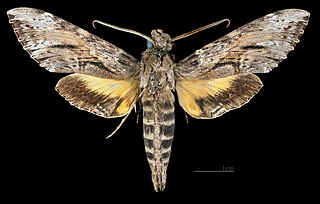
Isognathus rimosa, the rimosus sphinx, is a moth of the family Sphingidae. The species was first described by Augustus Radcliffe Grote in 1865.

Adhemarius gannascus is a moth of the family Sphingidae first described by Caspar Stoll in 1790.
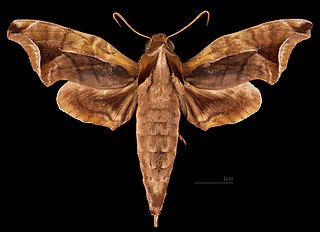
Enyo gorgon is a moth of the family Sphingidae.

Enyo lugubris, the mournful sphinx, is a moth of the family Sphingidae. It is found from Argentina and Paraguay to Uruguay, Venezuela, Guyana, Suriname, French Guiana, Colombia, Ecuador, Peru, Brazil and the West Indies through Belize, Guatemala, Honduras, El Salvador, Nicaragua, Costa Rica and Panama to Mexico and the United States, where it has been recorded from Arizona east to Florida and north to South Carolina. Strays have been recorded from Arkansas, north to Illinois, Michigan and New York.

Eumorpha vitis, known as the vine sphinx, is a moth of the family Sphingidae.

Manduca dalica is a moth of the family Sphingidae.

Manduca diffissa is a moth of the family Sphingidae first described by Arthur Gardiner Butler in 1871. It is known from most of South America.
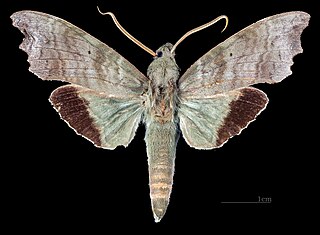
Aleuron chloroptera is a moth of the family Sphingidae. It was described by Maximilian Perty in 1833, and is known from southern Mexico, Brazil, Belize, Guatemala, Nicaragua, Costa Rica, Colombia, Peru, Bolivia, Venezuela, Guyana, Suriname, French Guiana, Paraguay, Argentina and Ecuador. It is probably also present in Uruguay, Honduras, El Salvador and Panama.

Aleuron neglectum is a moth of the family Sphingidae. It was described by Walter Rothschild and Karl Jordan in 1903.
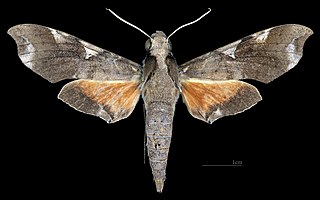
Callionima acuta is a species of moth in the family Sphingidae. It was originally described by Walter Rothschild and Karl Jordan as Hemeroplanes acuta, in 1910.
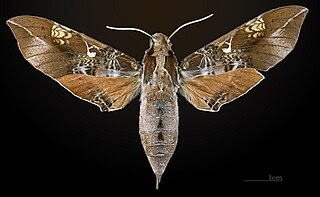
Callionima inuus is a species of moth in the family Sphingidae. It was described by Walter Rothschild and Karl Jordan in 1903.

Callionima parce, the parce sphinx moth, is a species of moth in the family Sphingidae.It was originally described by Johan Christian Fabricius in 1775.

Enyo latipennis is a species of moth in the family Sphingidae. It was described by Rothschild and Jordan, in 1903. It is known from Jamaica.

Enyo taedium is a species of moth in the family Sphingidae. It was described by Schaus, in 1890.

Erinnyis impunctata is a species of moth in the family Sphingidae.
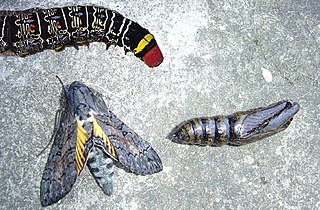
Isognathus caricae is a moth of the family Sphingidae. It is known from Costa Rica, French Guiana, Bolivia, Argentina and Brazil.

Isognathus scyron is a moth of the family Sphingidae.

Adhemarius ypsilon is a species of moth in the family Sphingidae. It was described by Rothschild and Jordan in 1903 and is known from Costa Rica, Mexico, Belize, Guatemala, Nicaragua, Venezuela, French Guiana, Ecuador, Peru, and Bolivia.
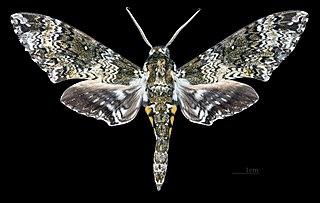
Manduca sesquiplex is a moth of the family Sphingidae. It is known from Mexico, Costa Rica and Nicaragua.























